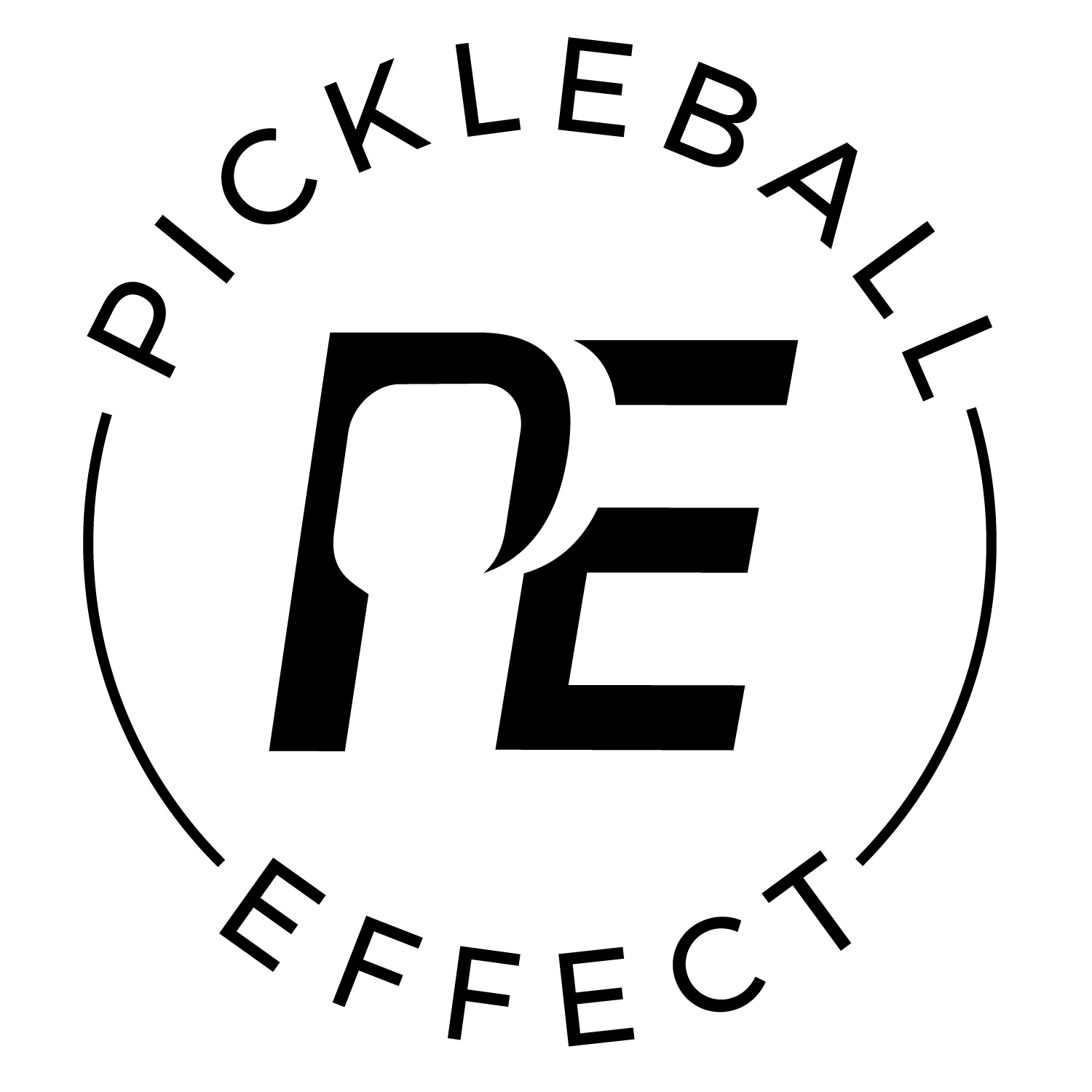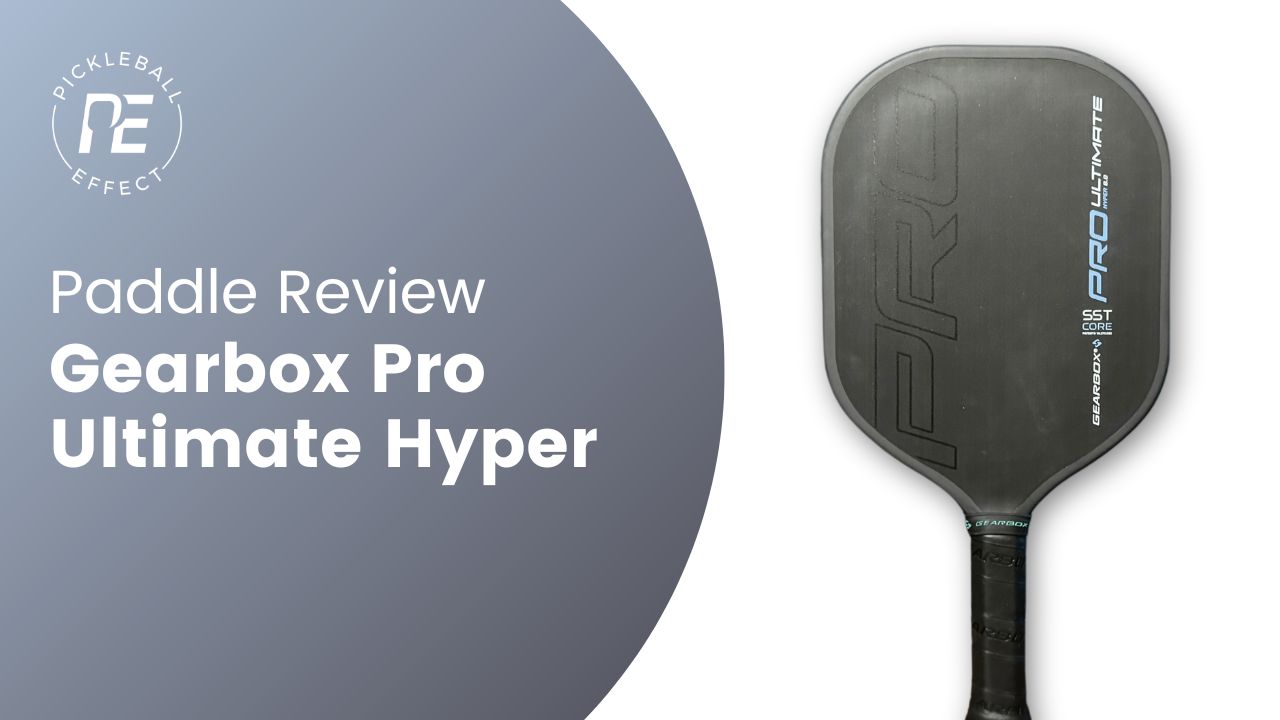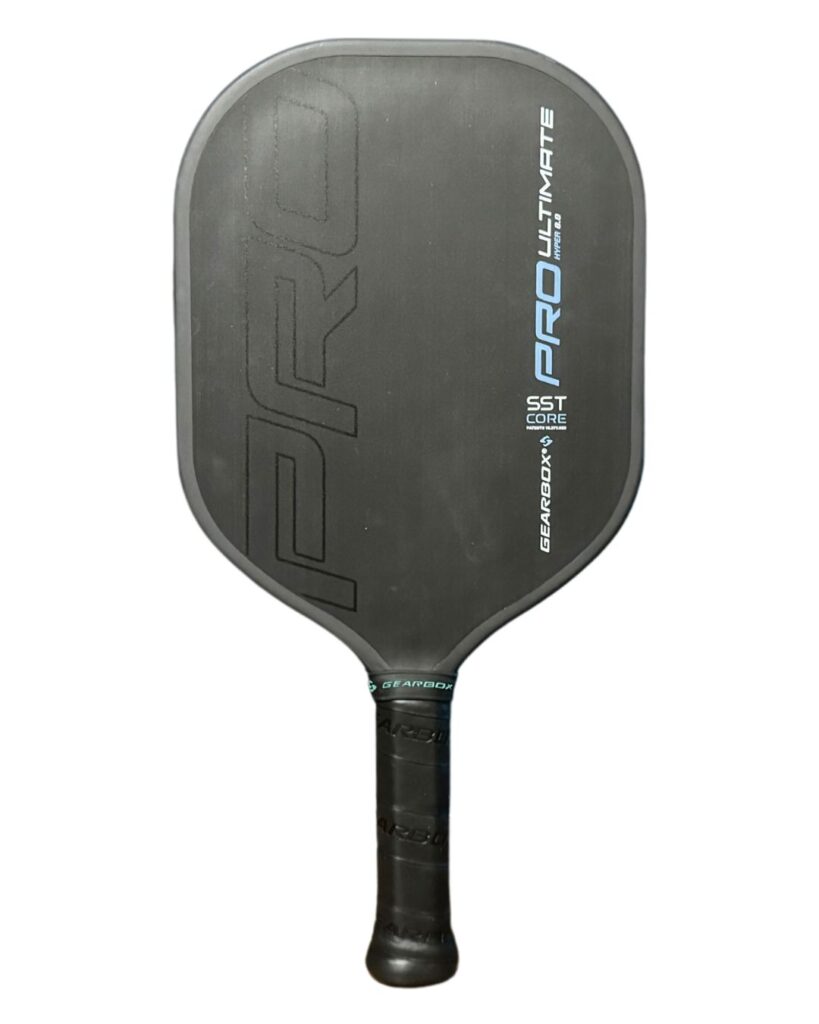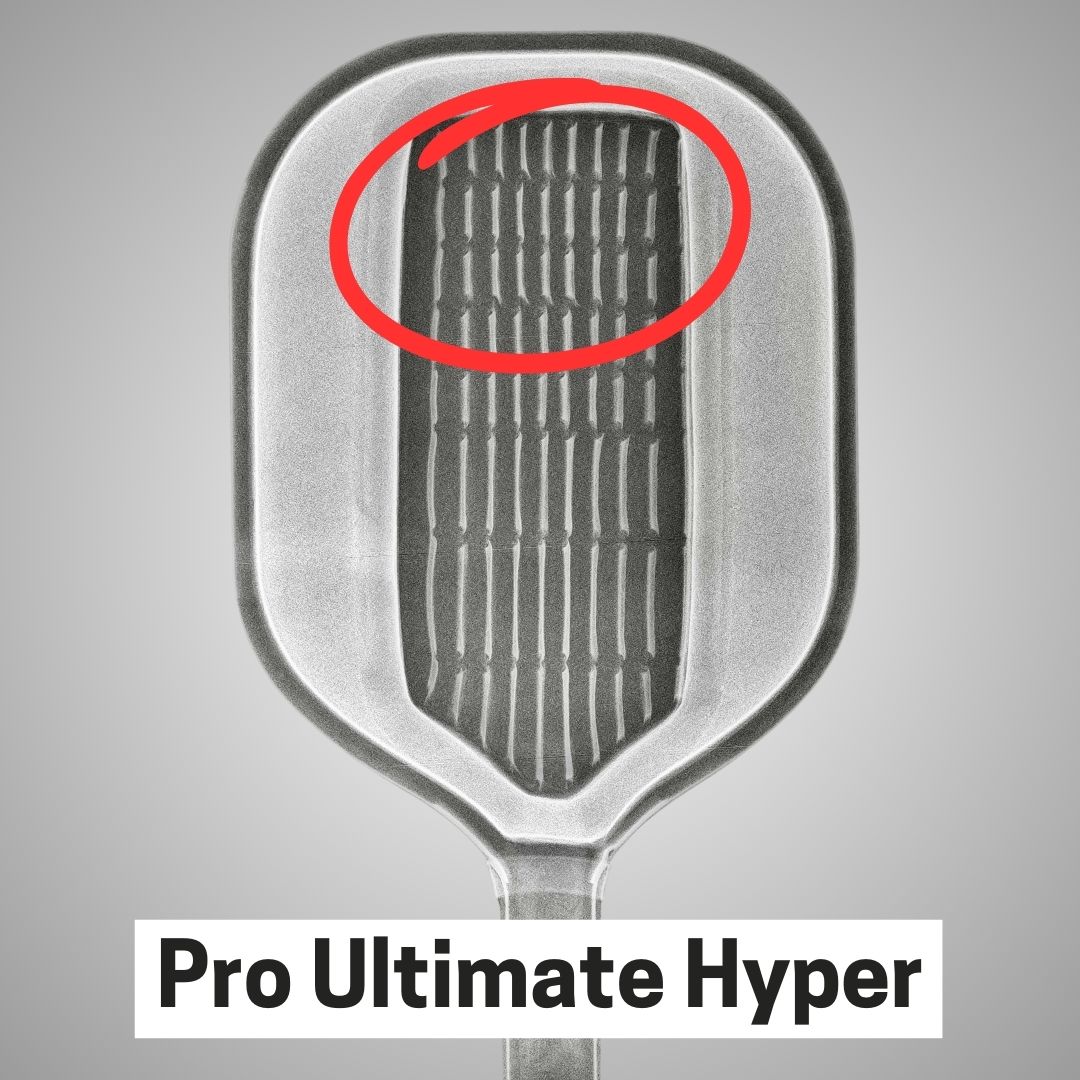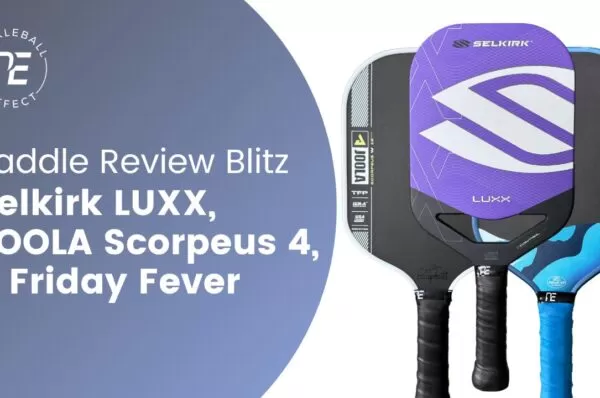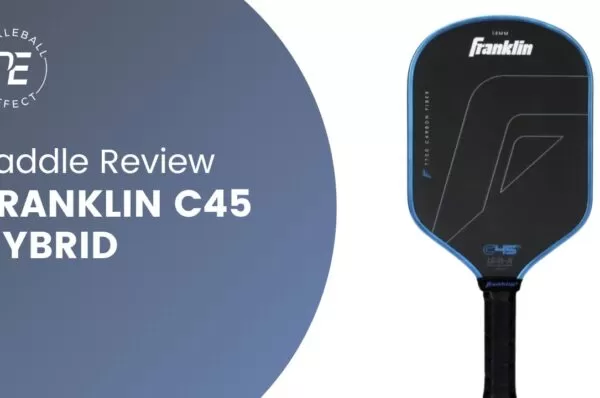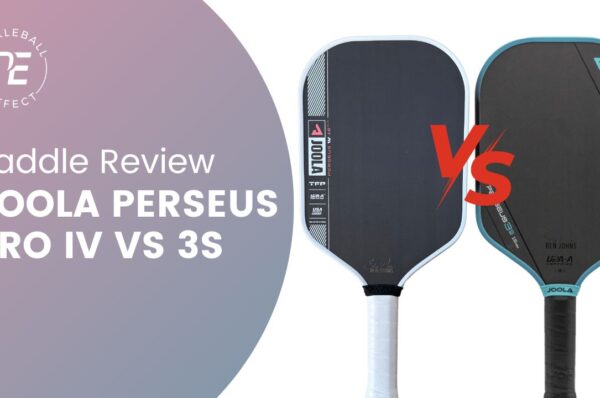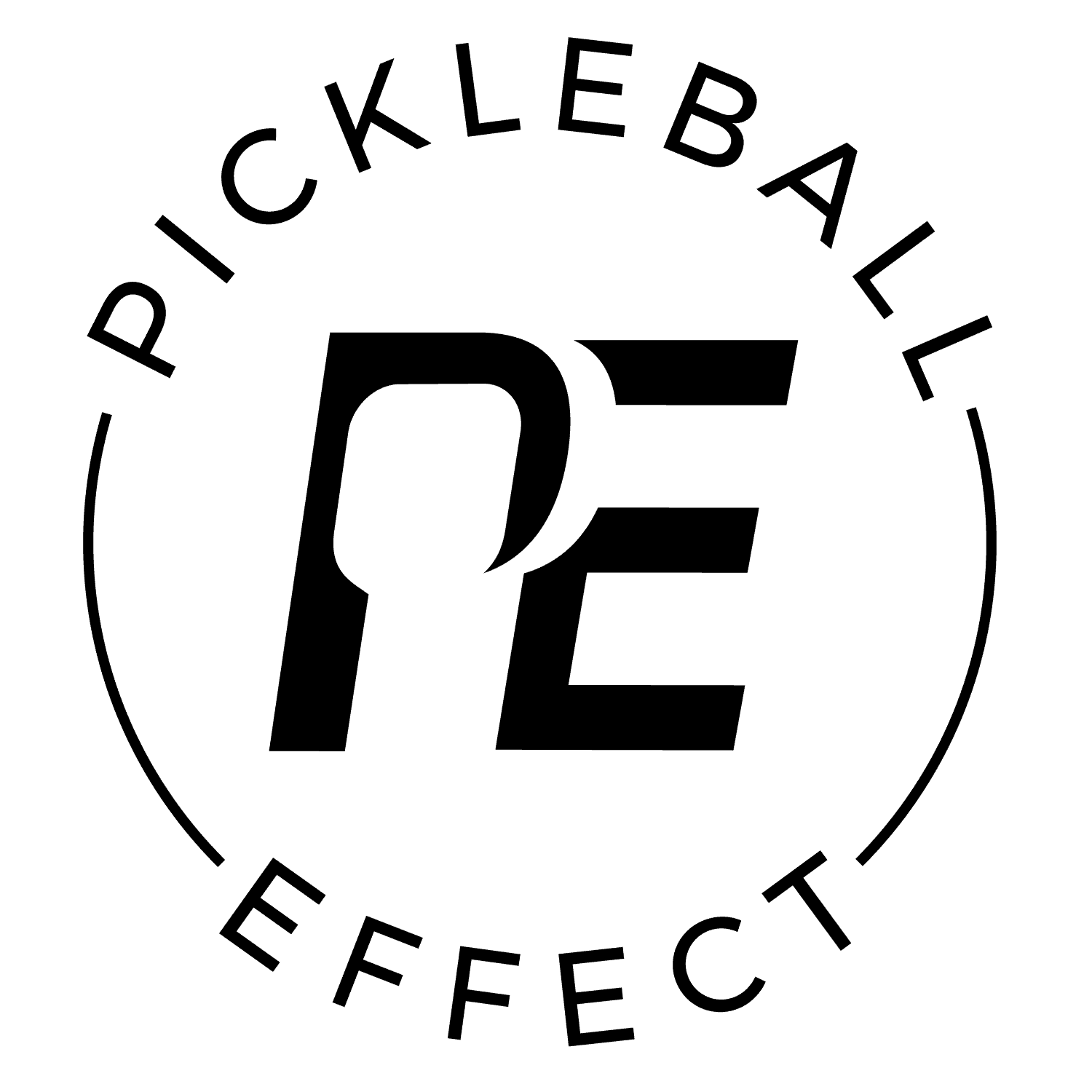The Gearbox Pro Ultimate Hyper is a standard-shaped version of the elongated Pro Ultimate they released earlier this year. I did a video review of the elongated version, which you can check out here. I liked many elements of the paddle and thought it brought a more pleasant feel to power paddles and was more forgiving than their Pro Power versions. However, it was very heavy with its 124 swingweight, which narrowed the audience of who could use it well. The Pro Ultimate Hyper, on the other hand, maintains the elements of the elongated version that made it great but has a much lighter swingweight of 115 and is more stable from side to side. You just give up some reach with its shorter and wider design.
I think the paddle plays well but Gearbox still faces durability challenges which I’ll also speak to at the end of this review. Alright, let’s get into it. I’ll first speak to the technology of the paddle because it’s unique to Gearbox. Then I’ll speak about the paddle’s performance. Lastly, I’ll talk about the paddle’s durability.
Table of Contents
Paddle Technology & X-Rays
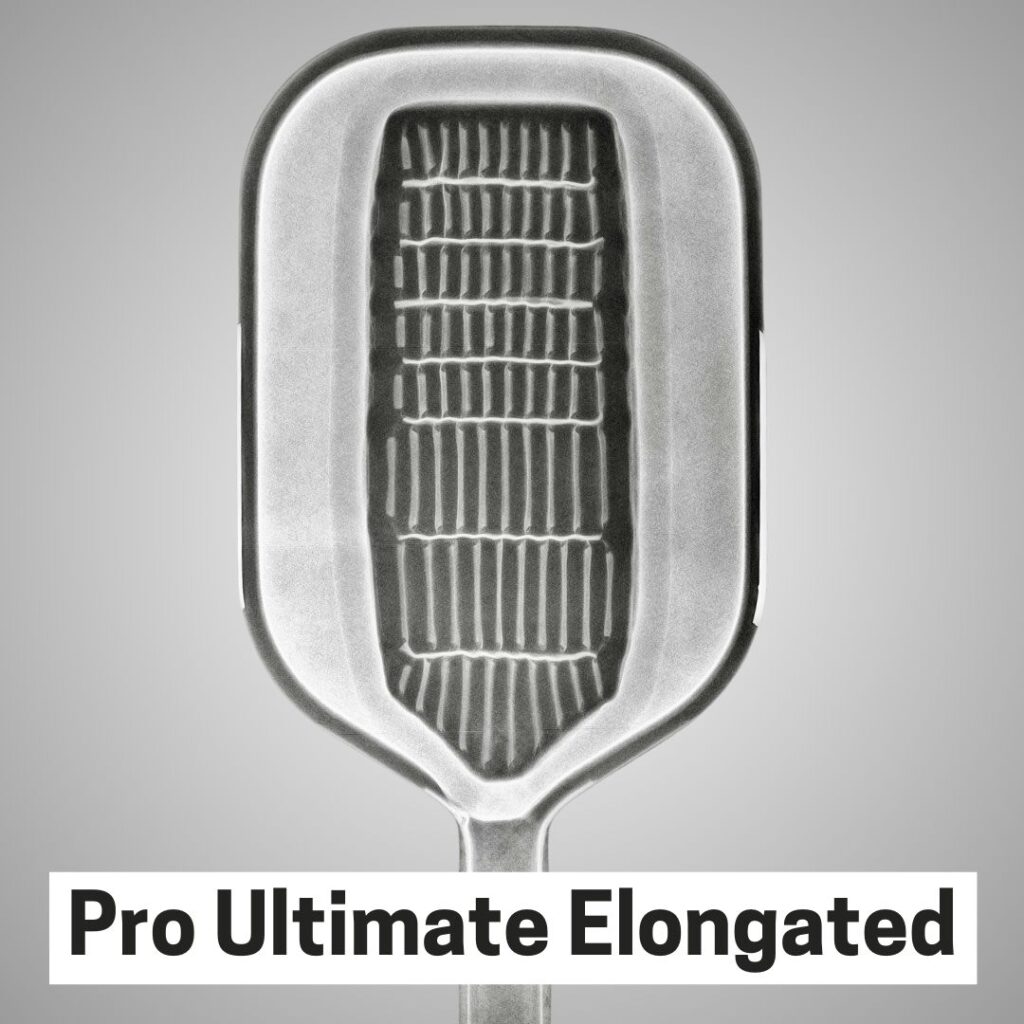
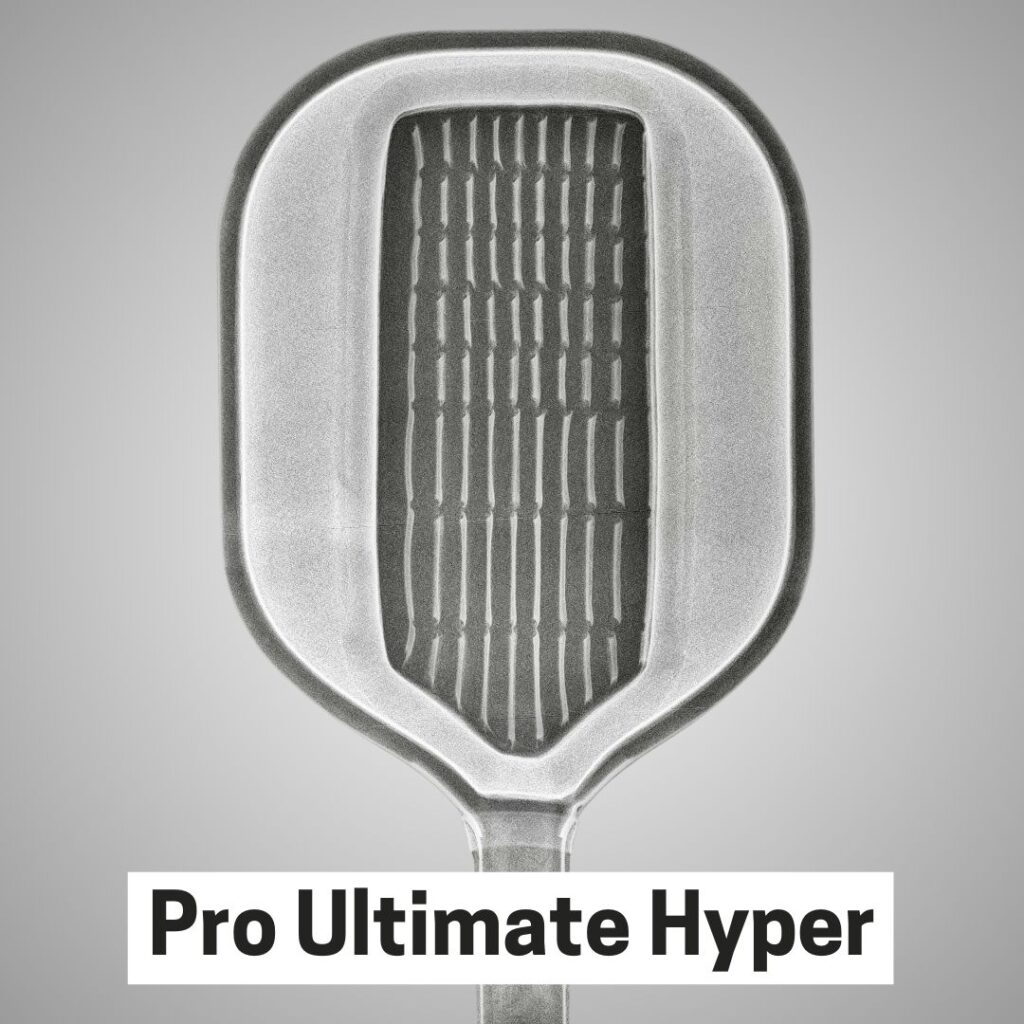
Gearbox developed a paddle core that no one else uses or even gets close to. I’d venture to guess that 96% of the paddles you run into have a polymer honeycomb design. The Pro Ultimate uses what Gearbox calls their Power Matrix which is a combination of carbon fiber tubes and expandable foam. All of Gearbox’s power style paddles use some form of this Power Matrix.
I took some x-rays, shown above, of the Pro Ultimate elongated and the Pro Ultimate Hyper. I wanted to see what they look like inside and to see if there is any difference between them. You can see the Power Matrix in the middle there but I was surprised to see it’s very narrow and doesn’t span across the entire width of the face. Plus the Matrix isn’t wider on the Hyper and is the same width as the elongated version. I would have guessed they made the Matrix wider to match the shape. Instead, the sides are filled with an expandable foam to help with noise and vibration reduction.
One thing I noticed with this Power Matrix is how it affects the sweet spot location and power drop around the sides which I’ll speak to in the performance section next.
Additionally, a key difference between the Ultimate series and the Power series from Gearbox is the paddle’s thickness. The Ultimate is 16mm thick while the Power is 14mm. To me, this drastically improved the sweet spot of the Ultimate paddles and the loss in power and pop was minimal.
Performance Summary
Pro Ultimate Hyper
- Static Weight: 8.0
- Swingweight: 15 (moderate)
- Twistweight: 6.36 (average)
- Spin RPMs: 1986 (high)
- Length x Width: 16″ x 8″ (standard shape)
- Face: Raw carbon
- Grip Circumference: 4″
- Handle Length: 5.5″
- Core: 16mm SST Power Matrix
- Paddle Type: Power
- Price: $274.99 (no discount codes)
- Warranty: 1 year
Power/Pop
This is one of the juicer standard shaped paddles you’ll find though it’s not the most powerful. Both its power and pop fall above the 80th percentile in my paddle database for my power and pop tests. It’s not a huge power paddle but I still consider it a power paddle. Not many paddles have a high power and high pop combo, especially in the standard shape category. It’s one of only a few options out there that include the JOOLA Scorpeus 3S, Paddletek Bantam ESQ-C 12.7, and the Ronbus Ripple R2. Of this group I’d say the Hyper falls just below them in power and pop. This approachable power is a good place for a lot of players looking to add more offense to their game without going all in on a huge power paddle.
Control
The thing that stands out for Gearbox power oriented paddles is their unique, quiet, plush feel paired with the power. It has an impact feel reminiscent of control style paddles. Most power paddles have a harsher or stiffer feel to them. This gives you a better connection to the paddle and a more comfortable experience in general. The paddle is still on the poppier side so it’s not an easy paddle to control. However, compared to other standard shaped power paddles like the Paddletek Bantam ESQ-C series, it’s easier to control because it’s not quite as poppy and you can feel the ball on the face better.
Sweet Spot
When I was doing my pop tests for the paddle I noticed that some of my results were high and others were low. Usually there is more consistency. So I reran the tests and noticed I was getting higher results when I was hitting higher on the face. When you look at the x-ray of the paddle you can see that there are more smaller cell structures of their Power Matrix concentrated at the top of the paddle. I kept playing around with it and found that the sweet spot on this paddle is higher on the face and corresponds with the smaller cell structures shown in the x-ray. It gives you the sense that the paddle is longer than it really is.
I also noticed that while the paddle is more stable and forgiving than the elongated version, there is a more pronounced drop-off in energy return from the sweet spot to the sides compared to polymer core standard-shaped paddles. I think this is due to the Power Matrix not being very wide. The design on the edges differs from that in the middle. There were times here and there where I got more and times I got less than expected from the paddle because the bounce wasn’t as consistent across the face. This wasn’t a deal break for me, but I did notice it one or two times a game. Generally speaking I think the paddle plays with more stability than the Ultimate elongated, and as a result, more mishits go over the net, but it doesn’t have an oversized sweet spot like many standard 16mm paddles do.
Maneuverability
The paddle is much easier to maneuver and manage compared to the elongated version. Moving the paddle from forehand to backhand at the net is easier and you find yourself better positioned more often than you did with the elongated version. My unit had a swingweight of 115 which is considered midweight but it feels a little lighter than that since it’s edgeless too. I liked the balance and weight of the paddle. It didn’t feel cumbersome to manage and it had enough weight behind it to carry through the ball well.
Spin
The spin on this paddle behaves like Gearbox’s other paddles. This means you can achieve really good spin from the baseline because the technology of the paddle grips the ball better than a polymer core. Every once in a while you connect with one just right and the ball dips like you’ve never seen before. However, once you reach the net and start dinking or attempting roll volleys, the spin becomes more average.
Paddle Durability
Since Gearbox introduced their first paddle with their Power Matrix core in late 2023 they have faced durability challenges. The paddles experience what is commonly referred to as a “break in” and get noticeably hotter and more powerful over time. The issue is they get too powerful to the point they are hard to control and erratic. Which is not good for the player using the paddle or the opponents on the other side. Not everyone experiences this, though it’s not uncommon either. Typically players who can swing big and powerfully are the ones that stress the paddle enough to “break in” more than you want it to. Gearbox does have a good support team with a strong one year warranty so if you do run into any issues they will take care of you, but it’s still something to be aware of.
My Recommendation
In my estimation this is Gearbox’s best paddle to date. It’s more forgiving than their past paddles, has their unique plush feel combined with power, and it’s much lighter than their past power paddles which is something that has been plaguing them. This is one of the more approachable power style paddles I’ve played as a result. It’s a good option for many levels of players who want more offensive but don’t want the stiffer feel or smaller sweet spots that come with many of the others in its category. It isn’t perfect, though. It has the more dramatic drop off in speed from the sweet spot to the sides and Gearbox still has its durability challenges.
Braydon competes at the 5.0 level and plays in 5-10 tournaments a year. He plays/drills 3 to 4 times a week and would play more if time allowed it.

Paddle Terms Glossary
We’ve categorized paddles into three categories. Control, All-Court, and Power. Paddle categories are determined by Braydon after he hits or reviews the paddle.
- Control paddles offer a softer feel and better absorbs pace off the ball but doesn’t give you as much power.
- All-Court paddles give you a blend of power and control and does well at everything though it doesn’t excel at anything.
- Power paddles often have a firmer feel and will return more power but are harder to control.
A paddle’s weight represents the inherent mass of the paddle as measured on a scale. However, relying solely on this static weight measurement can be misleading when assessing the true perceived heaviness of the paddle. Even if two paddles both clock in at 8 oz, their actual heft in your hand can markedly differ due to variations in weight distribution within the paddle. This is why the static weight should be considered with the swingweight of the paddle. See the definition of swingweight below.
The weight value listed in the database corresponds to the paddle’s weight that I used to gather the swingweight and twistweight measurement. It’s possible that if your paddle has a different static weight than then the swingweight and twistweight may be slightly different.
There are three primary shapes a paddle can have which consists of the length and width of the paddle. These three shapes are:
- Elongated: The dimensions for an elongated paddle are 16.5″ x 7.5″.
- Standard: A standard shaped paddle has dimensions of 16″ x 8″.
- Hybrid: A hybrid shaped paddle falls somewhere in between the standard and elongated shapes, with approximate dimensions of 16.25″ x 7.5″-7.7″.
Then there are two less common shapes you’ll see. These are:
- Extra-Elongated: This shape is 17″ x 7″
- Widebody: This any paddle shorter than 16″ long.
When considering the advantages and trade-offs of paddle shapes, it’s important to understand the characteristics of each shape.
- Elongated Paddle: An elongated paddle offers increased reach, spin, and power. However, this additional reach comes at the expense of forgiveness, particularly from side-to-side.
- Standard Paddle: In contrast, a standard-shaped paddle provides less reach and a little less power & spin but offers greater overall forgiveness. This means that while you may not have the same extended reach as an elongated paddle, you gain better control and stability.
- Hybrid Paddle: The hybrid shape serves as a middle ground between the elongated and standard shapes. It provides a balance between reach and forgiveness, offering players a versatile option that combines aspects of both shapes.
It’s interesting to note that advanced players often prefer elongated shapes. On the other hand, players at lower skill levels typically opt for the extra forgiveness offered by standard shaped paddles.
Ultimately, the choice of paddle shape depends on an individual’s playing style, preferences, and skill level. Whether your focus is on reach or forgiveness, understanding the unique benefits and trade-offs of each shape can assist you in selecting the paddle that best suits your game.
Swingweight is a measure of the paddle’s resistance to swinging about the end of the handle. The higher the swingweight number the heavier it will feel in your hands. A higher swingweight has more power but is harder to swing, lower swingweight is easier to swing but has less power. Sometimes a faster swing with a lower swingweight can make up for power lost in swingweight. The price paid for that is greater impact shock. Stock swingweights will vary between 100 – 140.
Twistweight is the resistance to rotating around the long axis through the middle of the paddle from butt to tip. The higher the twistweight the more resistance the paddle has to rotating on off center hits. This measurement is closely related to the amount of forgiveness or the size of the sweet spot of the paddle. A higher twistweight indicates a bigger sweet spot. Twistweight numbers range from 5 – 8.
Measuring the revolutions per minute (RPMs) off of a serve you get a number that shows the spin potential of a paddle. Using these RPM measurements I’ve created five buckets that a paddle will fall into indicating its overall spin potential. The five buckets are:
1900 or Higher = Very High
1700 – 1900 = High
1500 – 1700 = Medium
1300 – 1500 = Low
1300 or less = Very Low
You can tell a big difference in the amount of spin a paddle generates when you compare a Very High paddle to a low paddle. But the gains from Medium to High to Very High are marginal. We’ve found that having at least a medium rating is often enough if you’re looking for a good spin paddle. However, if you’re a big hitter then you will benefit more from a high spin paddle to help you keep the ball in play more often.
The power level of a paddle is shown in miles per hour (MPH) after taking ten measurements with a speed gun of hitting a serve as hard as I can. This measurement gives you an idea of how hard you can hit the ball when given the chance to take a full swing. So shots like serves, drives and overheads. The higher the MPH reading the more power you can generate with the paddle.
I also show the percentile ranking of the measurement to give you an idea of how it stacks up against the rest of the paddles in my database.
The pop level of a paddle is shown in miles per hour (MPH) after taking the average of ten speed gun measurements of hitting a punch volley as hard as I can. This measurement gives you an idea of how hard you can hit the ball on shorter swings and gives you an idea of how quickly a ball comes off the face when you apply less force on the ball. So shots volleys, dinks, counters, and resets are all affected by the pop measurement. The higher the pop measurement the stronger your counters will be but it takes more skill to keep the ball from floating or popping up on you when resetting a hard hit ball or when dinking.
I also show the percentile ranking of the measurement to give you an idea of how it stacks up against the rest of the paddles in my database.
